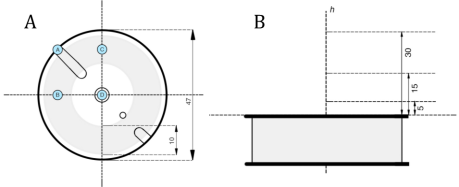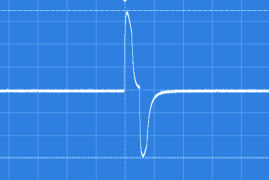General use and clearance
Pulsed electromagnetic field (PEMF) therapy is a non-invasive, non-thermal treatment using different magnetic fields working on bodies or tissues to promote healing. PEMF devices have been approved by the U.S. Food and Drug Administration (FDA) to treat non-union fractures and cleared to treat post-operative pain and edema, osteoarthritis, and plantar fasciitis. Health issues often treated with PEMF devices include bone fractures, inflammation and arthritis, pain, edema, and chronic wounds. There is an ever-growing body of pilot research and clinical evidence in support of PEMF treatment concerning wellness and medical use.
Widely different waveforms used in the targeted PEMF devices have been successfully used to treat various troubles. Furthermore, the strength of the magnetic fields generated by PEMF devices can vary dramatically from less than one Gauss (0.1 mT) to several thousand Gauss (n x 100 mT). PEMF waveforms, in the configurations cleared for human use by the FDA, were designed to penetrate through the human body tissue of all types, allowing for effective non-invasive therapy.
Mechanisms and uses
The working of oscillating magnetic fields on human and animal organisms and cells is not yet clear. Many hypotheses were proposed, and some of them were at least partially confirmed, but no one answers all theoretical questions. Let us enumerate some of them:
- Increased calcium ion (Ca2+) signaling
- Production of nitric oxide (NO)
- EMF exposure increased the expression of bone morphogenetic proteins 2 and 4, induced osteogenesis, and promoted differentiation of osteoblast cells, all of which are consistent with bone repair
- Reduce inflammatory gene expression in immune cells, reduce programmed cell death, promote dilation of blood vessels, and enhance circulation
- These results are consistent with reductions in pain, swelling, and inflammation that have been observed clinically.
- A number of studies have also found that PEMF treatment can increase the expression of heat shock proteins (HSP), a class of inducible proteins that are expressed under conditions of stress and have been associated with a number of cytoprotective and anti-apoptotic effects.
- PEMF (low frequency) has also been linked to cell membrane adenosine receptor expression. Activation of these receptors by endogenous adenosine is associated with reductions in prostaglandins and inflammatory cytokines, again consistent with the published clinical findings of reduced pain and inflammation.
Nevertheless, parallel to pure scientific research, there abound research that successfully copes with various health issues. Among them, the most bone healing, osteoarthritis, inflammation, pain, edema, soft tissue wound healing, neurodegenerative illnesses, and even cancer.
Safety
The known dangers of non-ionizing electromagnetic fields and radiofrequency fields are due to thermal effects (e.g., heating caused by microwave radiation). The Institute for Electrical and Electronics Engineers Standards for Radio Frequency Electromagnetic Field Exposure concluded that “A review of the extensive literature on radiofrequency biological effects, consisting of well over 1300 primary peer-reviewed publications published as early as 1950, reveals no adverse health effects that are not thermally related”. Non-invasive, non-thermal PEMF technologies have a long history of clinical use. Since the late 1990s, PEMF devices are estimated to have delivered over 3,000,000 treatments without reports of side effects or significant adverse events. Underscoring this point, two general reviews of clinical PEMF use found no evidence of significant adverse events or side effects in the literature reviewed.
PEMF characteristics
Frequency range
1 Hz to 350 Hz
Intensity range and distribution
From nT (if enough far from the targeted bodily spot, this low intensity may be achieved by NeoRhythm’s coils) to 25 mT. More specifically, the generated fields extend into the surrounding space as seen in Picture 1.

Picture 1:
A) Ground plan of the coil and the places of the measuring points,
B) side view of the coil and the distance of the measuring points from the coil
All measurements were taken with a transverse probe perpendicular to normal vector h (Picture 1B). The magnetic field values are given in Table 1 and are graphically presented in Graph 1
| mm | BA (mT) | BB (mT) | BC (mT) | BD (mT) |
|---|---|---|---|---|
| 0 | 0.2 | 5.1 | 7.4 | 13.6 |
| 5 | 1.1 | 3.3 | 4.2 | 8.7 |
| 15 | 0.9 | 1.8 | 1.9 | 3.3 |
| 30 | 0.5 | 0.7 | 0.7 | 1 |
Impulse wave-form
A single pulse is depicted in Picture 2. As clearly seen, it is very steep and bipolar.

Picture 2: The form of the NeoRhythm pulse.
Scientific literature search and selection methodology
Our research team has prepared an extended bibliometric review of recent scientific research in PEMF therapeutic areas – see the Bibliometric Review page.
Criteria for selection of literature
- The article speaks about positive effects,
- Frequency and the field strength (intensity, amplitude) lie within limits given in 3.A (frequency) and 3.B (strength),
- The pulse form did not enter the selection criteria. Sometimes we decided to select even an article reporting about the effect of a modulated pulse where the carrier frequency was as high as approaching microwaves. However, it was necessary that the modulated frequency was in the ELF frequency region. On the other side, we also included articles where the stimulation waveform was sinusoidal. In general and according to our experience, we expect that the bimodal square waveform would induce more pronounced biological effects vs. sinusoidal stimulation and comparable results where the used carrier wave belongs to much higher frequencies, even reaching the edge of microwaves.
- Heterogeneity (“point” like the source of stimulation) – homogeneity (Helmholtz coils) was not among our selection criteria. Although the NeoRhythm radiates a very complex non-homogeneous magnetic field (many – as default five – small coils), articles reporting physiological effects of homogeneous field (for instance the whole head lay in the Helmholtz coils) entered our selected list. The main reason for the PEMF stimulation research in homogenous fields lies in the scientific review procedures, where reviewers frequently demand almost perfect conditions for experiment repetition, which is not well achievable in heterogeneous magnetic fields. On the other hand, there are countless reports that very similar effects may be achieved by widely different magnetic field intensities (see also Paragraph 2.3 in Supplement to NeoRhythm as investigational device expertise). Besides, many successful devices for PEMF stimulation are based on heterogeneous magnetic fields (relatively small coils). If there is a positive scientific report regarding PEMF stimulation in a homogeneous magnetic field (Helmholtz coils), there is a high probability that a similar effect will be achieved by a similar magnetic field when applied to the reported bodily part, despite being heterogeneous (produced by a relatively small coil or more of them).
- In the list, we did not include only articles reporting successful magnetic field stimulation experiments on human volunteers but also articles where the reported experiments were done on animals and tissue (cell) cultures (for instance, with cancer). NeoRhythm also enables such research.
- In the RCT status of the research reported in articles (see Appendix 1) we also included some anecdotical cases.
PEMF Modifications
Modifiable components: